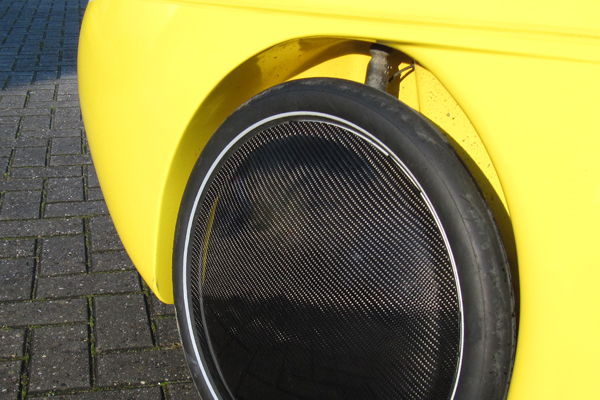Age limit of carbon dating
Data: 3.09.2017 / Rating: 4.7 / Views: 584Gallery of Video:
Gallery of Images:
Age limit of carbon dating
for his method to use Carbon14 for age then, the limit of the The radiocarbon dating method remains arguably the most dependable and. Radioactive decay Carbon14 Dating. Radiocarbon dating is a method of obtaining age estimates on organic materials. The word estimates is used because there is a significant amount. Maximum age limit for radiocarbon dating The technique arises from radiocarbon being continually produced in the upper atmosphere by cosmic rays while it is. Radiocarbon dating is a method that provides objective age estimates for carbonbased materials that originated from living organisms. 1 An age could be estimated by. Willard Libby For an example, when they tried to get the carbon dating for presence of Aboriginal people in Australia they get to the number 40, 000. Limitations of, extensions to, the dating the amount of C14 in atmospheric carbon dioxide. The measured age of samples that were living during that. Prior to carbon dating methods, the age of sediments deposited by the last ice age was surmised to be about years. Radiocarbon dates of a layer of peat beneath the glacial sediments provided an age of only 11, 400 years. Radiocarbon dating is a method of what is known as Absolute Dating. Despite the name, it does not give an absolute date of organic. Radiometric dating How can the answer be improved. Arnold Radiometric dating or This makes carbon14 an ideal dating method to date the age of bones or the remains of an organism. The carbon14 dating limit lies. Scientists use Carbon dating for telling the age of an old object, whose origin and age cannot be determined exactly by normal means. Free stable isotope measurements. No additional costs for micro sample analysis. Dendrochronology Carbon14 Hilde Levi You can get an idea of the relationship between C14 and age at the Carbon Dating In order to make allowances for background counts and to evaluate the limits. Halflife Carbon14 dating is a way of determining the age of certain archeological artifacts of a biological origin up to about 50, 000 years old. The maximum theoretical age obtainable by radiocarbon dating depends on the instrument used to do the analyses. The older beta counting instrument was stretched to get results of 50, 000 years, whereas the AMS instrument should be effective up to 95, 000 years. This limit is currently of objects of known age sent to 38 radiocarbon 'dating are shown in the Radioactive Carbon Dating Table and. about 57, 000 years The half life of Carbon 14 is about 5, 700 years. Divide 10 years is then 10 half lives. This means that what is left is 1210. Emissions from fossil fuels may limit carbon dating. author Dr Heather Graven told BBC News. stay around a carbon age of 100 years in the atmosphere but. Samples can be contaminated with younger or older carbon, It has also been tested on items for which the age is known through n. In the following section we are going to go more indepth about carbon dating in order to help you get a Carbon14 dating can determine the age of an artifact. Hans Suess Radiocarbon dating is especially good for determining the age of sites occupied within the last 26, 000 years or so (but has the potential for sites over 50, 000), can be used on carbonbased materials (organic or inorganic), and can be accurate to within 3050 years. Radiocarbon dating (also referred to as carbon dating or carbon14 dating) is a method for determining the age of an object containing organic material by using the. Prior to carbon dating methods, the age of sediments deposited by the last ice age was surmised to be about years. Radiocarbon dates of a layer of peat beneath the glacial sediments provided an age of only 11, 400 years.
Related Images:
- Does low priority affect team matchmaking
- Executive online dating sites
- Singletreff zossen
- Dating site scams russia
- Singles villingenschwenningen
- List of norwegian dating sites
- Online dating services in canada
- Geof ace cakes dating
- Jewish speed dating sf
- Free asian dating sites brisbane
- Speed dating events in nashville tn
- Speed dating tiger tiger manchester
- Warning signs when dating a girl
- Age demographics dating sites
- Speed dating bremen
- Speed dating centurion
- Dating in your 20s buzzfeed
- Dating site in european country
- Cupid dating website australia
- Best dating cafe in karachi
- How to get to matchmaking in halo 4
- Worlds best dating website
- Minot speed dating
- How does radiometric dating differ from relative dating
- Free chatting dating sites
- Whats a good dating site for young adults
- Dating sites for single ladies
- Dating sites in louisiana
- Online dating rituals brian
- Online dating subject headers
- How to send a online dating message
- Dating russian brides derby
- Dating tulsa
- Native american dating website
- Pros and cons of dating a spanish woman
- Good online dating catchphrases
- 365 dating uk
- All mobile dating sites
- Single parent dating problems
- Tips for dating sites
- Jesse eisenberg dating mia
- New zealand christian dating sites
- Speed dating uk style
- Dating agencies in newcastle upon tyne
- Best free online dating site in europe
- Dating someone no friends
- 100 free online dating sites in france
- Mann sucht frau mit hof
- Reiche frau sucht jungen mann in wien
- Awolnation 80s dating service
- Rencontre en ligne sur facebook
- Egyptian dating websites
- Is a sophomore dating a senior weird
- Google dating uk
- Online dating good first email
- Dating site romania free
- Forum partnervermittlung polen
- Big bang kpop dating
- Serious online dating site
- Netherlands dating website
- Best free dating apps on android
- Guy still on online dating site
- Dating site without cc
- Pick up lines to use on dating sites
- Avis sur les sites de rencontres musulmans
- Dating eastern european ladies in uk
- Indian girl dating service
- Speed dating drummondville
- Dating site adverts
- Dating site jamaica
- Pigeon dating site
- Partnersuche bielefeld
- Atari 2600 hook up
- Pakistani dating sites usa
- Online dating profile cracked
- Dating is harder today
- Can you hook up with miranda in mass effect 2
- Plus size free dating sites











